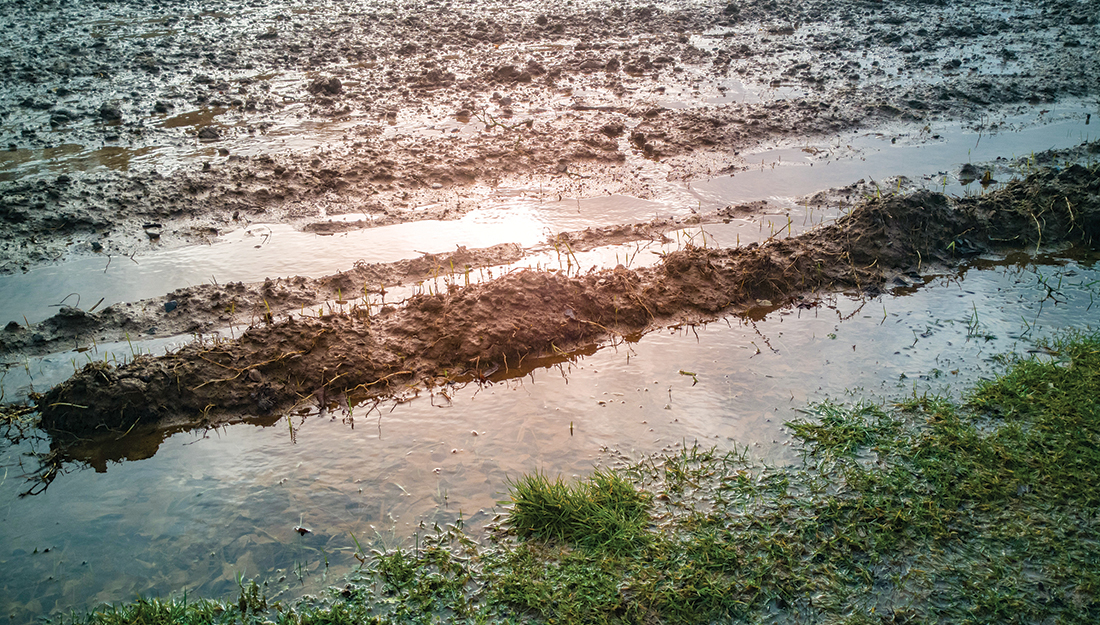- Christina Sumners
- Medicine, Pharmacy, Show on VR homepage
Bacteria and pathogens: Determining friend from foe in soil and water
New $14.2 million grant from DARPA will help create new way to test for dangerous bacteria in the environment

New $14.2 million grant from DARPA will help create new way to test for dangerous bacteria in the environment
A teaspoon of soil can contain as many as 1 billion bacteria, but most of them are completely harmless, or even beneficial. That also means that if someone with nefarious intentions adds dangerous bacteria to the soil, it can be difficult to sort out the good from the bad.
That’s why the Defense Advanced Research Projects Agency (DARPA) has awarded a $14.2 million grant to a team led by professors at Texas A&M to develop a way to quickly detect which bacterial pathogens are present in a soil or water sample. In an age where bioterrorism is a very real concern, DARPA is working on new ways to detect potential human-introduced pathogens in the environment—before people become ill.
“Dirt is not simple,” said James Samuel, PhD, Regents Professor and head of the Department of Microbial Pathogenesis and Immunology at the Texas A&M College of Medicine and principal investigator of this project. “In the past, we’ve only known about the bacteria that are able to be grown on a petri dish in the lab, but that’s only a fraction of what’s really there, whether we’re talking about in the soil or in your stomach. It’s not a trivial problem.”
Classifying bacteria, even those that can’t be grown and characterized in the traditional petri dish way, is a problem the team is working to solve.
Samuel, along with Arum Han, PhD, professor in the Department of Electrical and Computer Engineering, and Paul deFigueiredo, PhD, associate professor, and Erin Van Schaik, PhD, research assistant professor, both in the Department of Microbial Pathogenesis and Immunology, and other colleagues at Texas A&M, will try to create a device to rapidly and efficiently characterize the harmfulness of bacteria in the environment—essentially “culturing the unculturable,” Samuel said.
They will do this by screening each microorganism in the sample to see if it has the properties of a pathogen.
“There are unique qualities that pathogens have that non-pathogens do not,” Samuel said. “For example, pathogens have the ability to kill specifically eukaryotic cells types, including human cells, as part of their pathogenic strategy.”
But because no one can screen millions of cells by hand, the team is working on building a microfluidic device to do so automatically.
“Testing millions of cells to see whether they are potentially harmful or not, one cell at a time, cannot be achieved within a reasonable time frame even with the most advanced robotic liquid handling system,” Han said. “This is where the beauty of microfluidic devices comes in, where it can be used to test and probe every one of the millions of cells for their pathogenic traits with single-cell resolution.”
First, it will create water-in-oil emulsion droplets, each encapsulating a single bacterial cell. These droplets will each have eukaryotic host cells with the potential pathogen. “You need to see what happens when they’re together,” Samuel said. That’s the next step: high-throughput phenotyping, in which each bacterial cells can be characterized according to certain characteristics.
The final step is metagenomic analysis on each particle. Although this might seem to be the easy part, most of the time genetic sequencing is done on samples that have thousands (if not millions) of cells. Sequencing a single cell, on the other hand, is very new technology, and in this case, that information has to be referenced back to each individual bead.
“You have to label the DNA from each cell, uniquely, so you can backtrack,” Samuel said.
The goal is for the device to then take all of this data—the genomics and the phenotypes of each droplet—and put it all into an algorithm to create a readout that will predict whether pathogens are present in the sample, and if so, which ones they are.
“You commonly hear about big data…this is big data,” Samuel said. “You have to relate all of this information back to each particle in a massive database.”
To help with different aspects of this project, the Texas A&M team, which also includes Arul Jayaraman, PhD, the Ray B. Nesbitt Professor of Chemical Engineering, and Tony Provin, PhD, professor and extension specialist of the soil and crop sciences, is collaborating with other groups at the University of Oklahoma, University of California San Francisco, the University of Virginia, and the Argonne National Lab.
This information can then be used for a variety of applications, from knowing which antibiotic to give to someone exposed or—in the case of purposefully created bacteria—a way to track it back to its source.
“Until you know what pathogens are in the environment, you can’t know how to counter them,” Samuel said. “That’s what this project aims to find out.”
Media contact: media@tamu.edu


